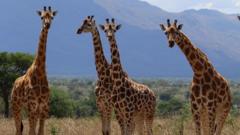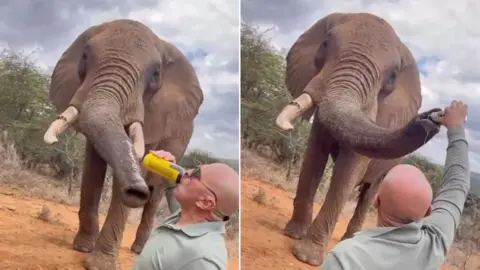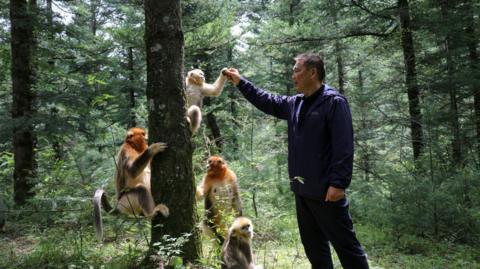The world's tallest mammals, giraffes, are now known to consist of four distinct species, according to a groundbreaking assessment by the International Union for Conservation of Nature (IUCN). This revelation has emerged from extensive research that involved analyzing their skull sizes and head shapes, reinforcing previously suggested classifications.
Scientists have determined that a variety of natural barriers, such as rivers, mountains, and valleys across Africa, likely drove the evolution of giraffes into these distinct groups. The newly categorized species include the Southern giraffe, found in southern African countries, which lives in regions separated by rivers and rainforests.
The second species, dubbed the Reticulated giraffe, roams the savannas and grasslands of Kenya, Somalia, and Ethiopia, its population once separated by geographical features such as the Tana River and Ethiopia's mountainous terrain. This species is known for its migratory patterns, which may have previously allowed for interbreeding.
The Northern giraffe, the third new species, resides in western Ethiopia and areas of Kenya, South Sudan, and Uganda. Historical migrations and barriers like the Nile River have kept this species distinct.
Last, but not least, the Masai giraffe, recognized for its unique leaf-patterned coat, inhabits Kenya, Tanzania, and Uganda, yet shares a boundary with the Northern giraffe through Lake Victoria and the Nile River.
This rediscovered classification has significant implications for conservation, as the IUCN emphasizes the need to understand the genetic differences within these groups. Michael Brown, co-author of the report, highlighted the former classification of giraffes as a single vulnerable species. The newfound recognition of their diversity will lead to more tailored conservation efforts.
The IUCN plans to reassess the vulnerability status of these species and implement strategic measures to ensure their preservation. The discovery of these distinct giraffe species sheds light on the complexities of giraffe populations and strengthens the foundation for effective conservation strategies.




















